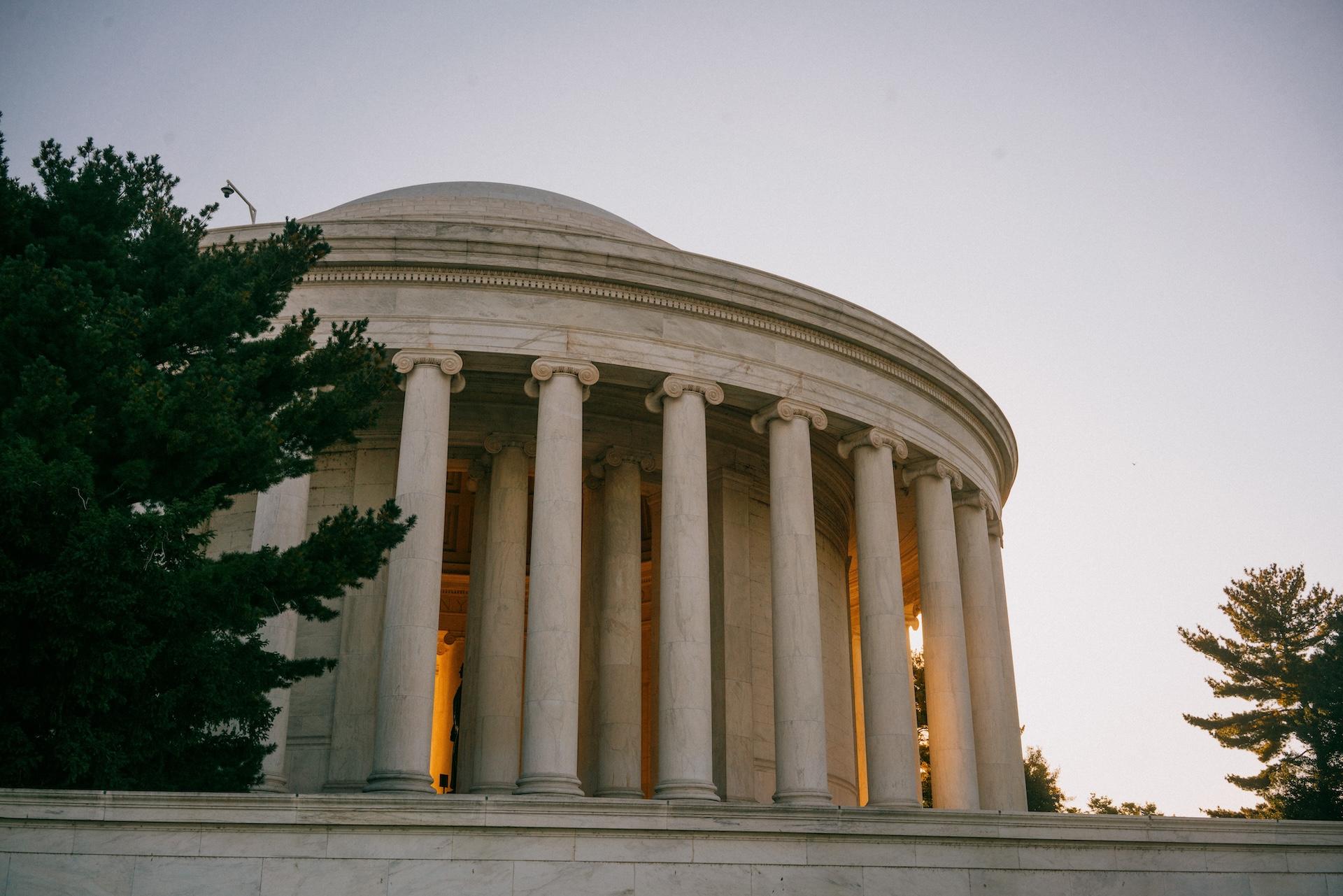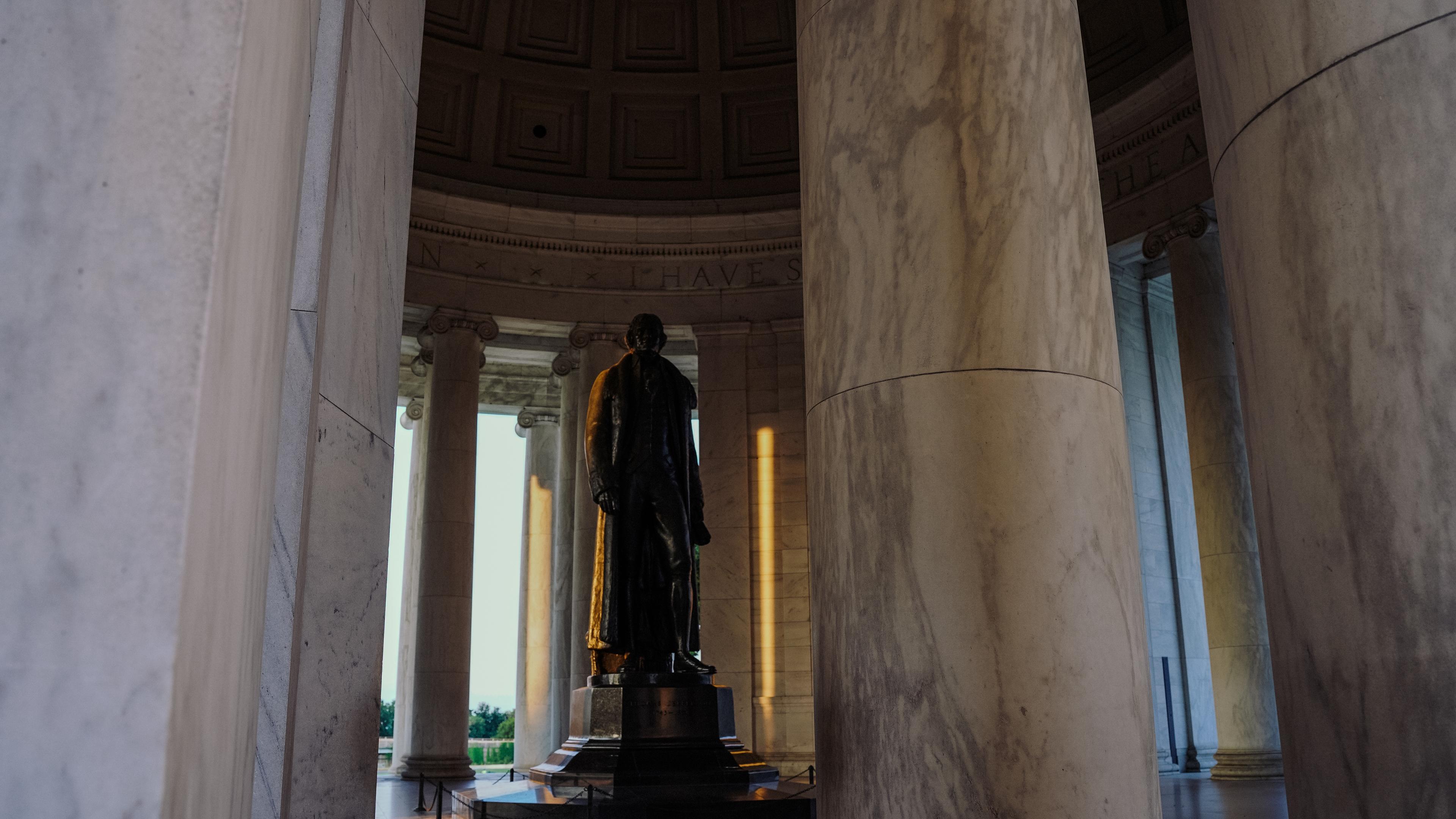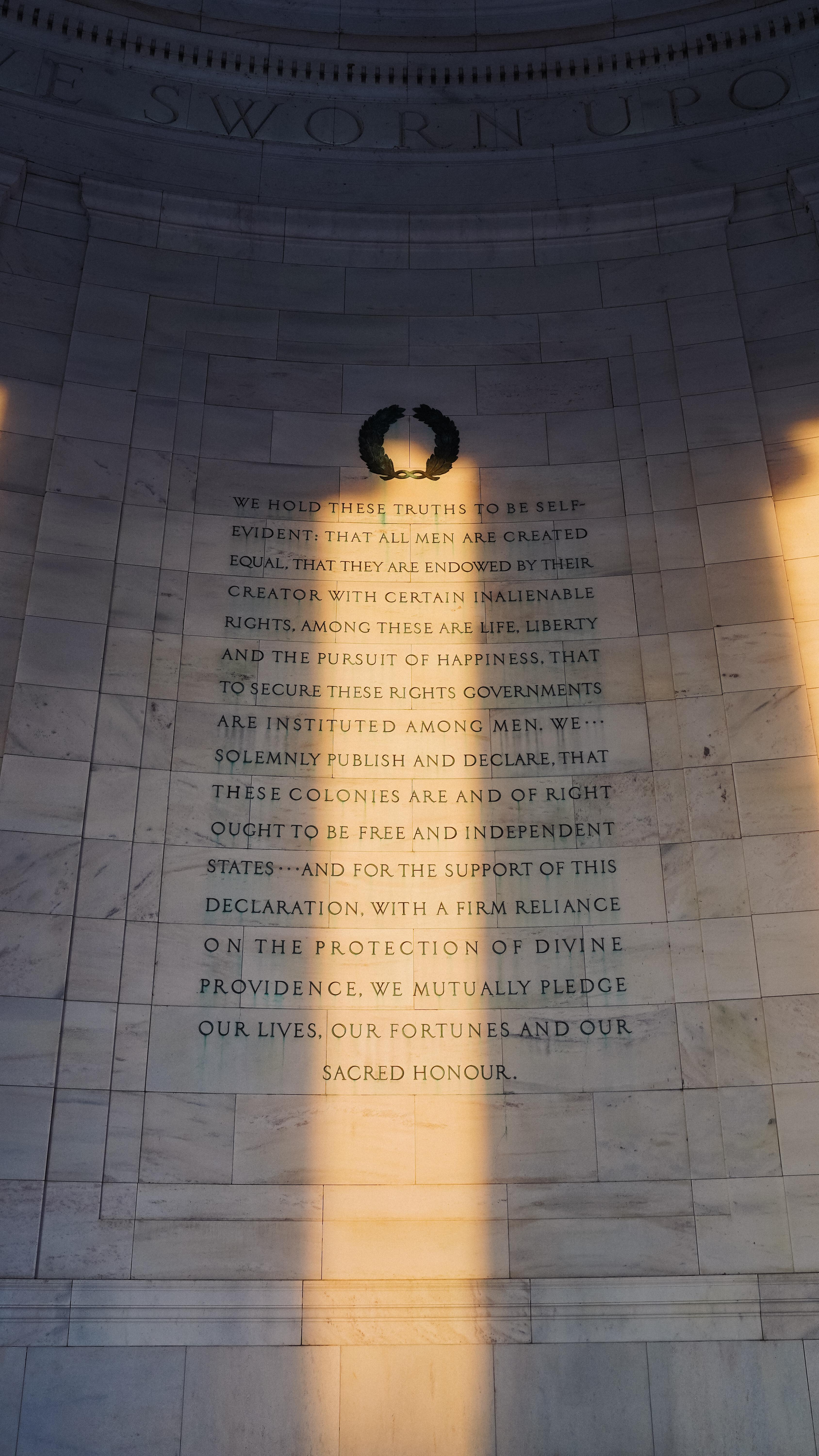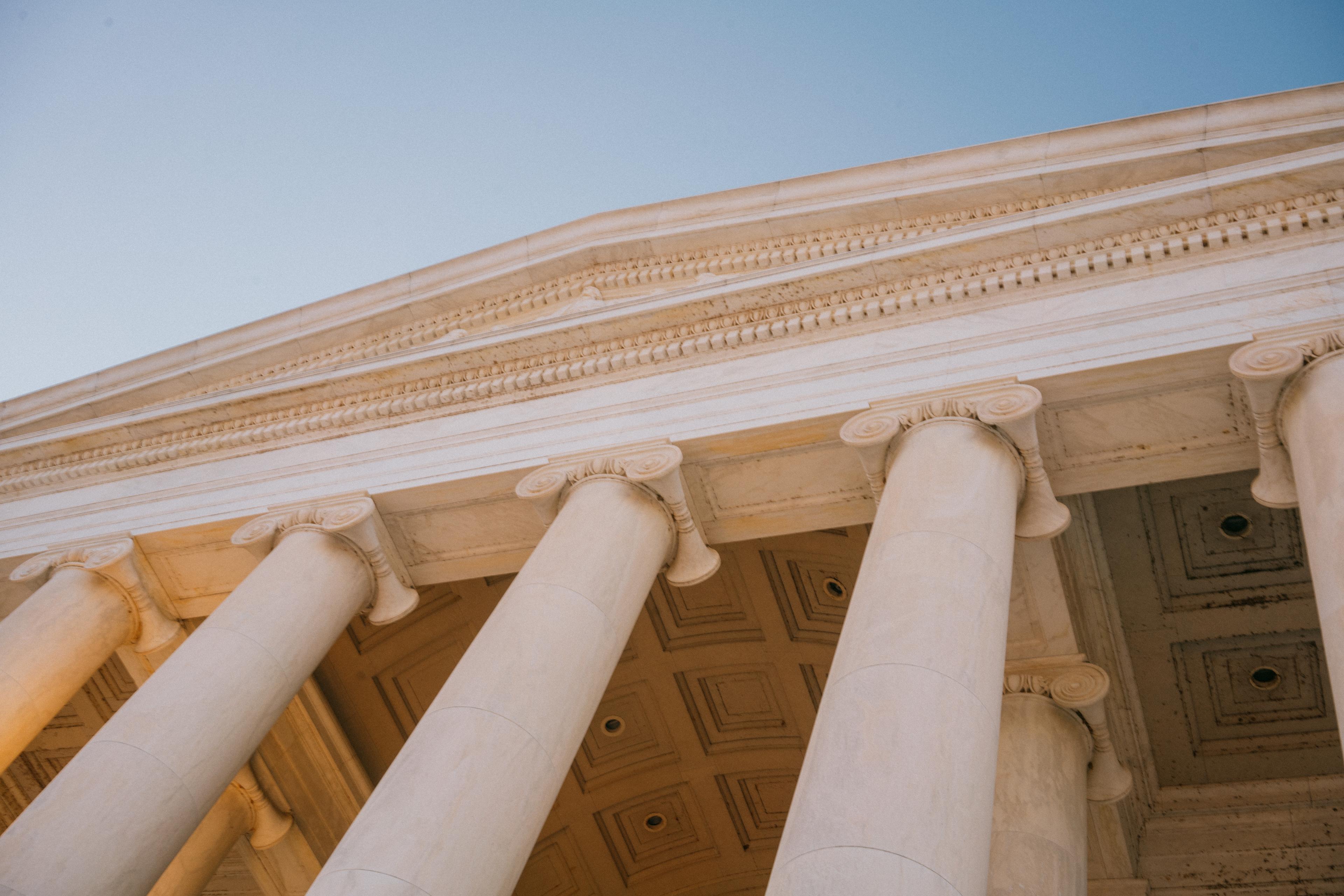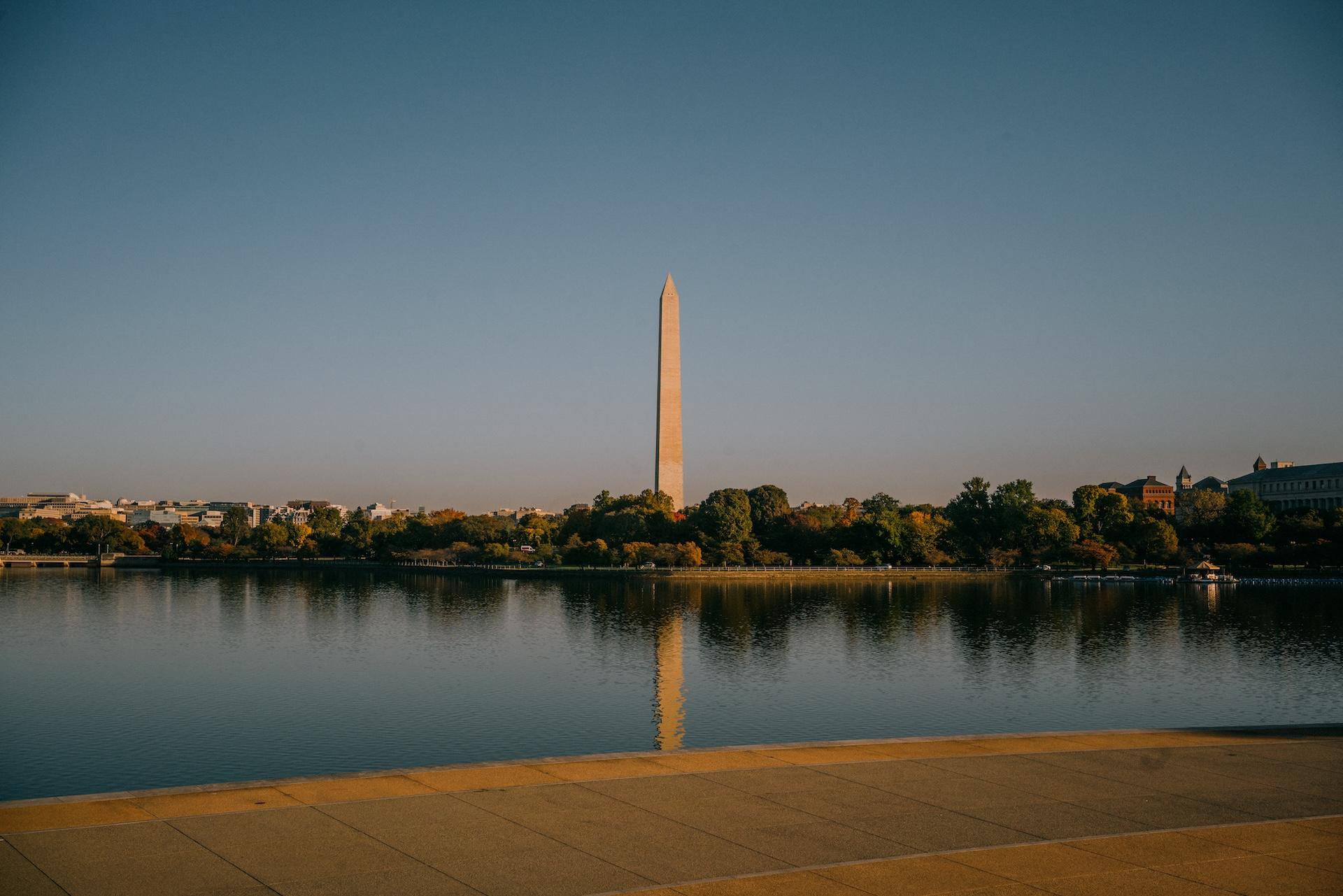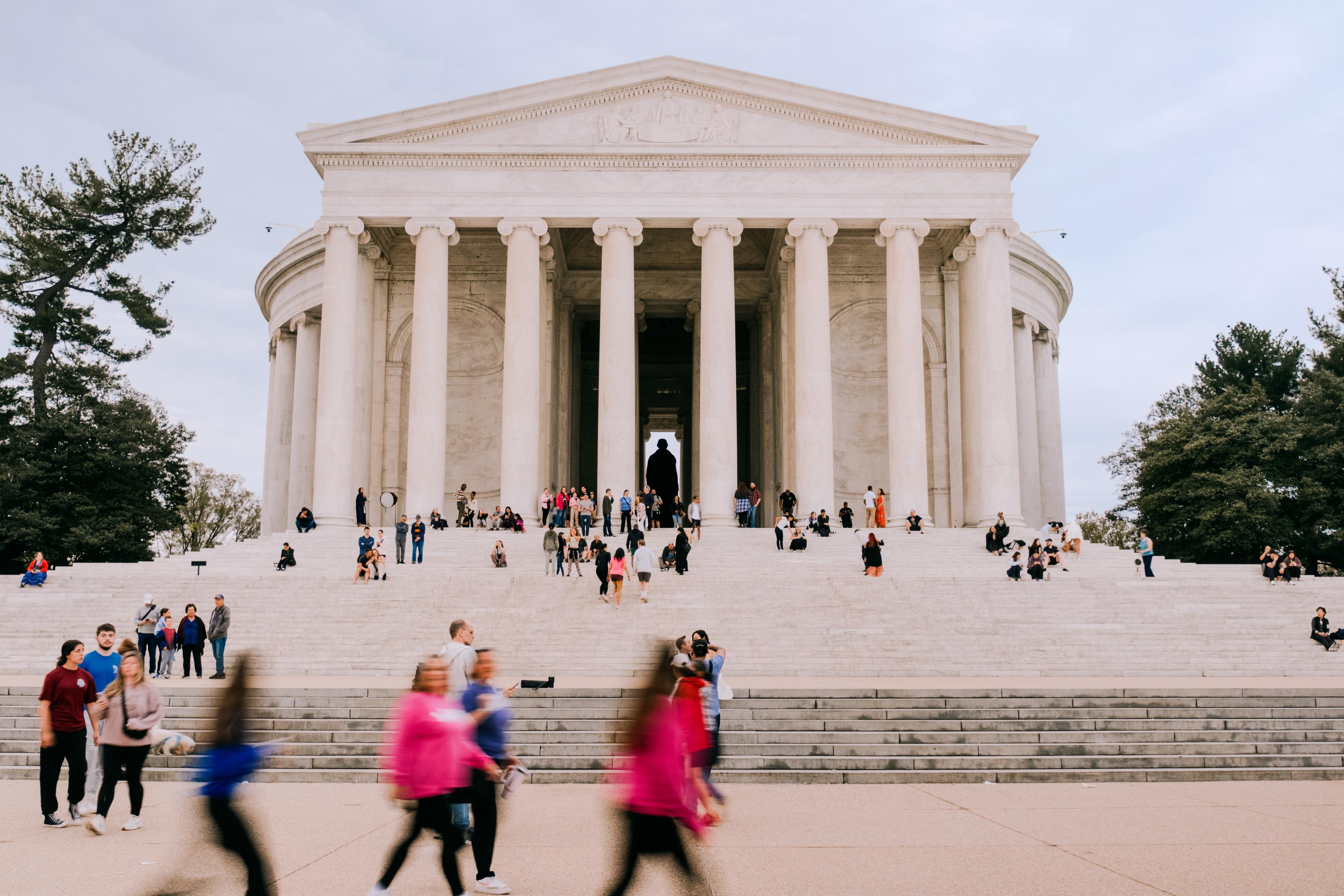
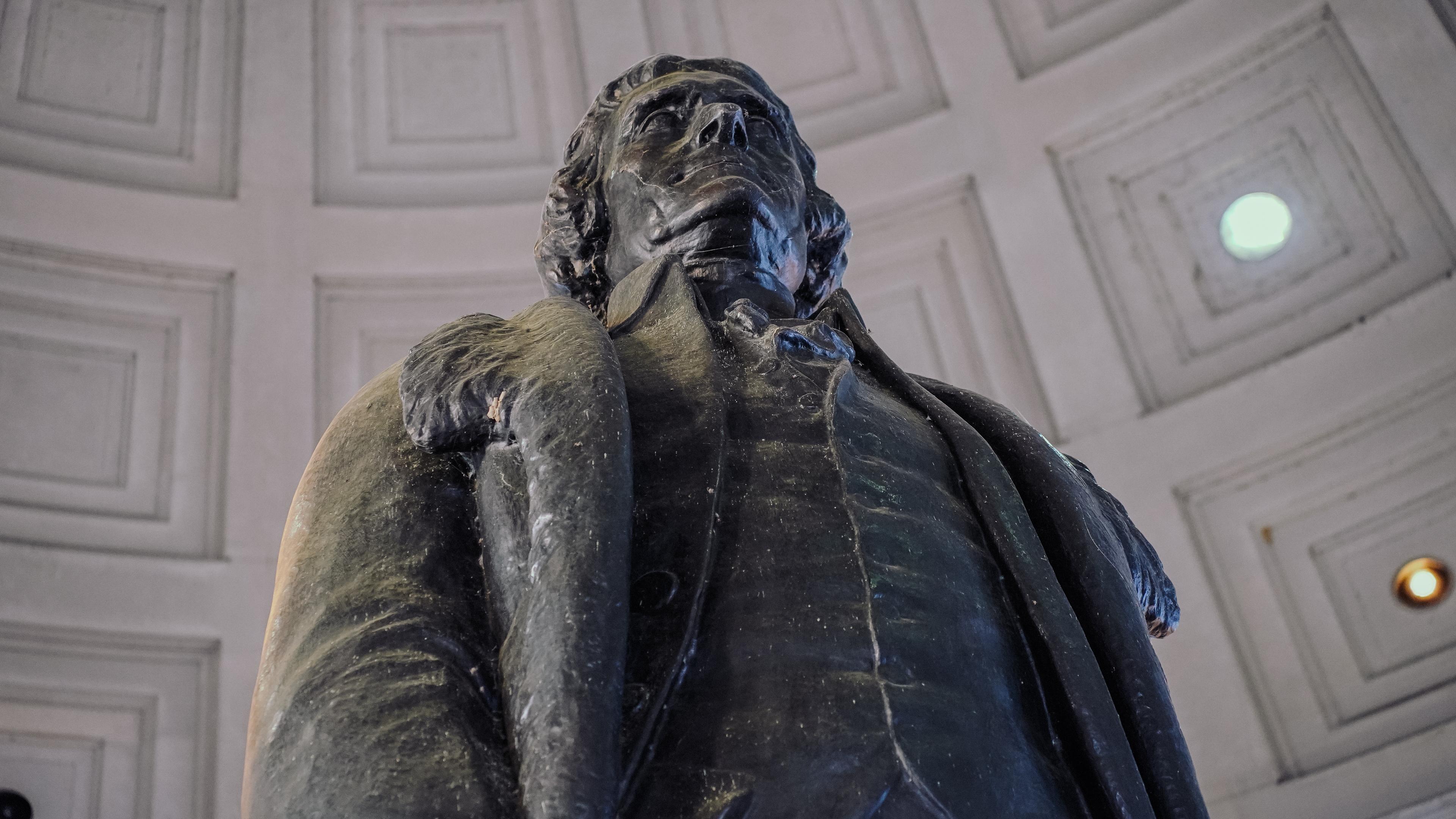
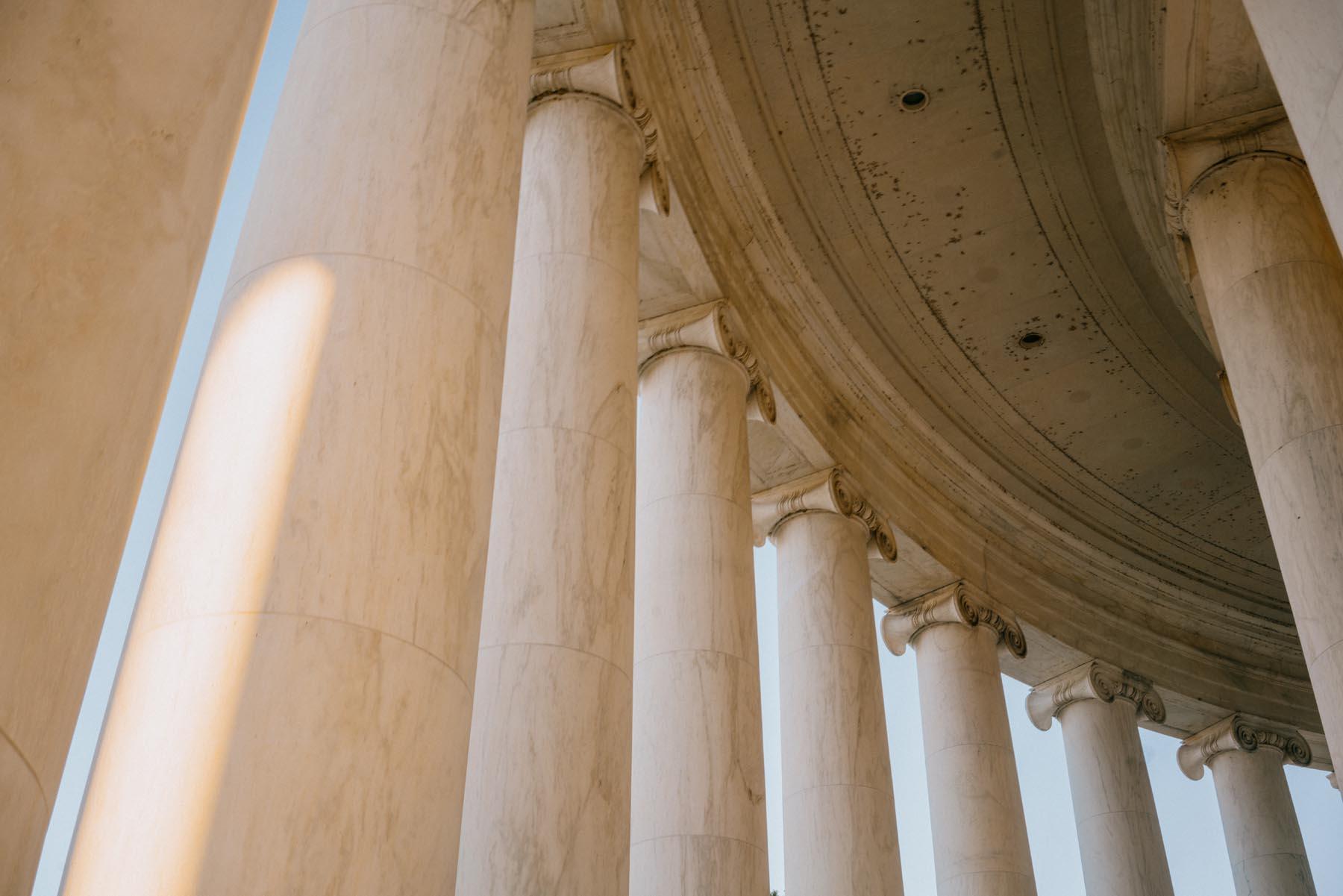
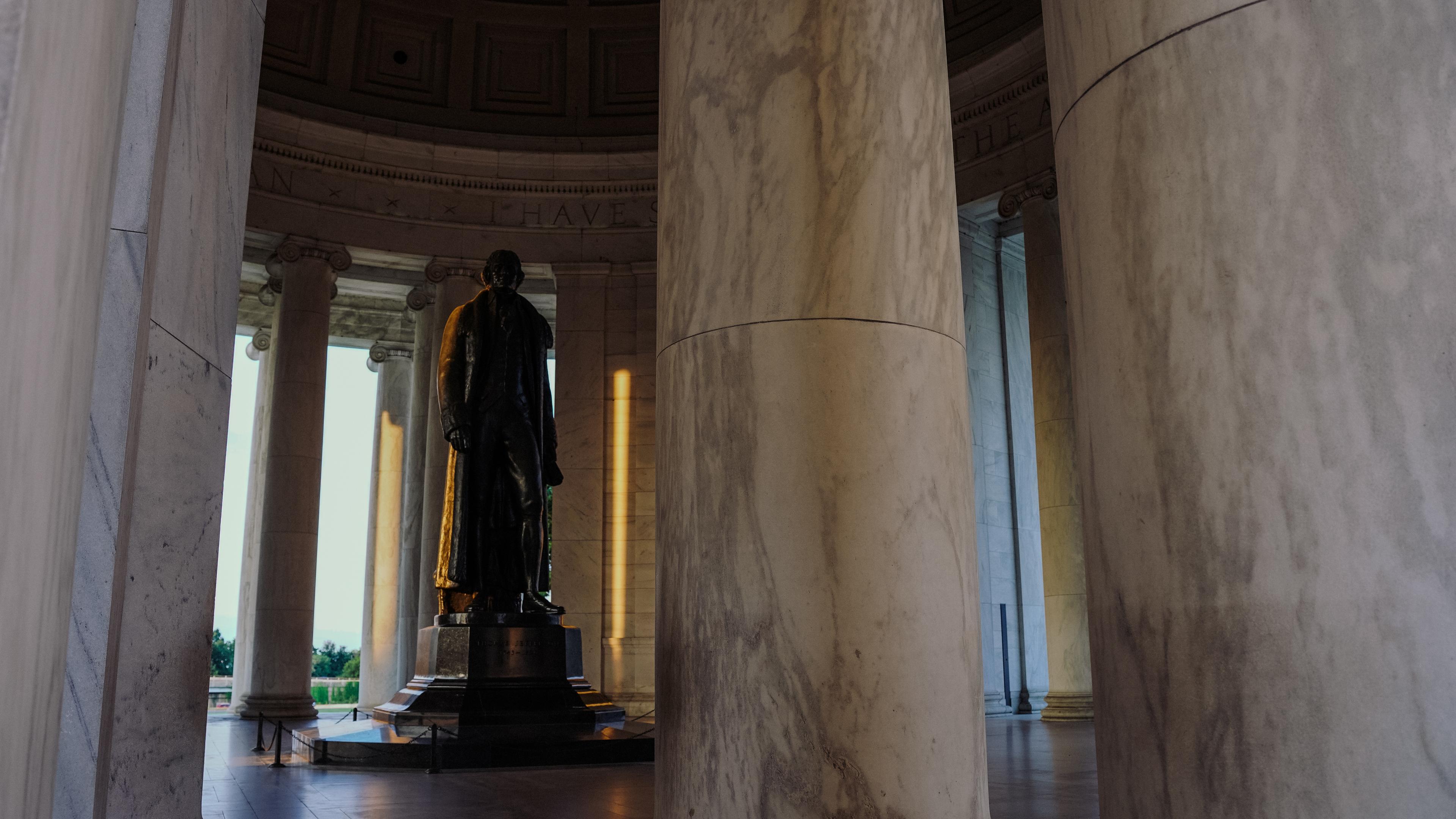
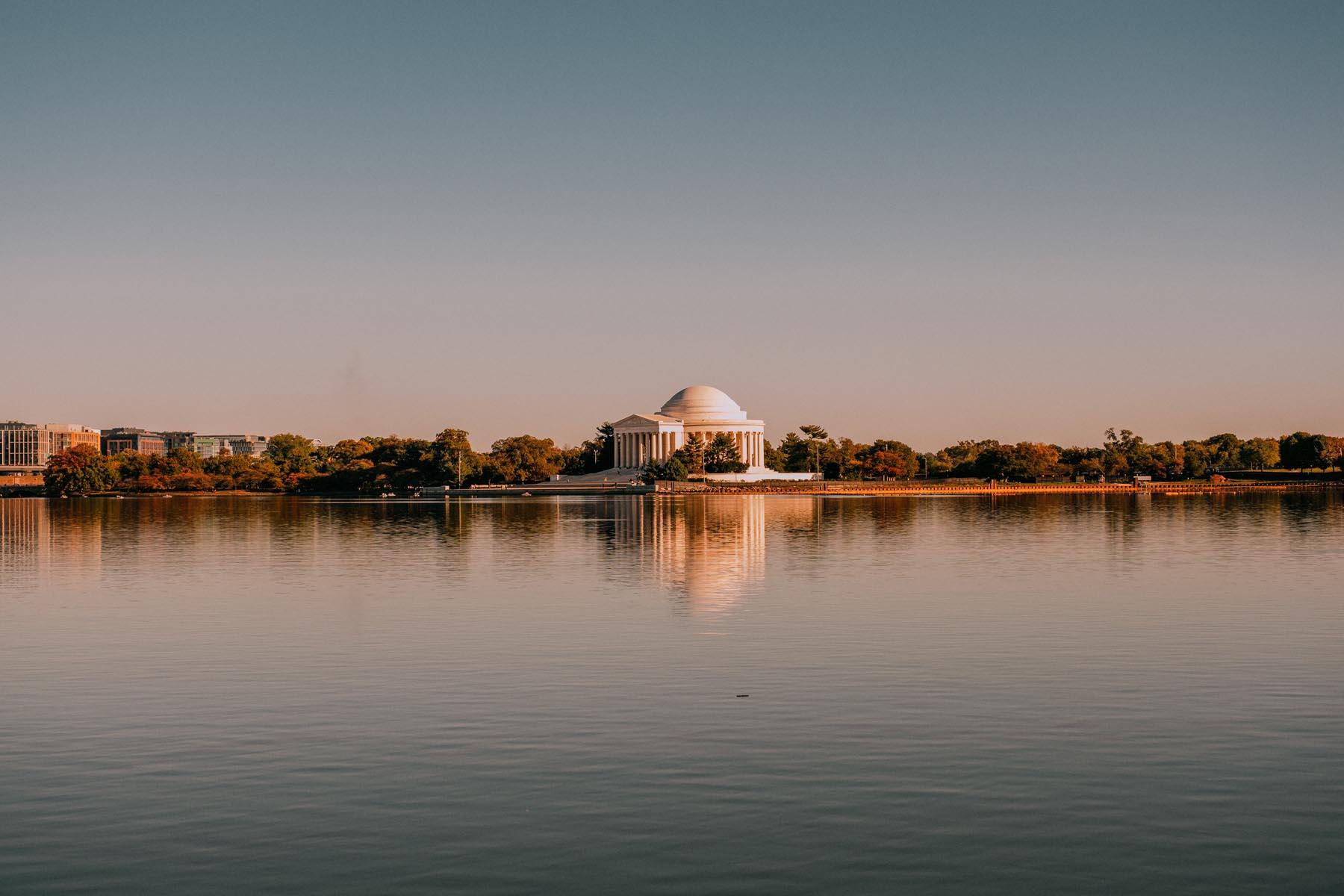
Thomas Jefferson Memorial
16 East Basin Drive SW, Washington, D.C.
Amenities
- Wheelchair accessible
- Restrooms — Daytime hours vary
- Open 24 hours
- Food & drink — Kiosk
- Gift shop — Daytime hours vary
- Museum - Daytime hours may vary.
During the government shutdown, open-air Memorials will generally remain accessible to visitors. Restrooms, bookstores, gift shops, and information kiosk services may be suspended. For more information, please visit: doi.gov/shutdown.
There are several multi-year construction projects ongoing around the Tidal Basin. While visiting the Memorial is not impacted, Ohio Drive SW and the Potomac Heritage Trail are closed for vehicle, bicycle, and pedestrian access between Independence Avenue SW and West Potomac Park Drive SW.
Thomas Jefferson (1743-1826) was the third President of the United States, serving from 1801 to 1809. He is best known as the author of the Declaration of Independence and the Virginia Statute for Religious Freedom.
Jefferson was a prominent public official, serving as a legislator, diplomat, and executive for nearly forty years. He played a key role in acquiring the vast province of Louisiana and maintaining neutrality during global conflicts. Jefferson was also a distinguished architect, naturalist, and the founder of the University of Virginia. As a successful lawyer and planter, he inherited and expanded a considerable estate.
The Jefferson Memorial is inspired by Thomas Jefferson's architectural tastes, including elements from the Roman Pantheon. The structure is made of various marbles and limestone, with a central statue of Jefferson by Rudulph Evans. The Memorial overlooks the Tidal Basin and offers views of major landmarks like the White House and the Washington Monument. It was authorized by Congress in 1934 and dedicated in 1943, with President Franklin D. Roosevelt playing a key role in its creation. The Memorial also features inscriptions of Jefferson's writings, emphasizing his contributions to American political thought and self-government.

Take a virtual stroll through this National Mall site
History
Timeline of events
Thomas Jefferson is born in Shadwell, Virginia.
Jefferson is admitted to the bar and begins practicing law.
Jefferson marries Martha Wayles Skelton.
Following his father's death, Jefferson inherited a five thousand acre plantation and thirty enslaved people. On this land, he would later build his home Monticello.
Jefferson writes 'A Summary View of the Rights of British America.'
Jefferson drafts the Declaration of Independence.
Jefferson serves as Governor of Virginia.
Jefferson serves as Minister to France.
Jefferson becomes our Nation’s third president.
Thomas Jefferson acquires the Louisiana Purchase doubling the size of United States.
Jefferson is inaugurated for his second term.
Jefferson serves as the third President of the United States.
Jefferson founds the University of Virginia.
The University of Virginia opens to students.
Jefferson dies in his home at Monticello in Charlottesville, Virginia, on the 50th anniversary of the Declaration of Independence.
Congress first proposes a memorial for Jefferson.
Congress authorizes the creation of the Jefferson Memorial.
Groundbreaking occurs, kicking off years of construction.
The Jefferson Memorial is dedicated.
Key Features
Cultural Impact
Fun fact: You might have a little piece of Thomas Jefferson in your pocket or wallet right now! Jefferson is on one side of the five-cent coin and his Virginia home, Monticello, is on the other. Jefferson is also featured on the two dollar bill!
Reflection Questions
High school learners: Our nation’s past is complex and often provokes reflection, especially as we look to the future. Here are a few questions to inspire deeper thinking:
- How did Jefferson's writings influence American political thought?
- What architectural elements of the Jefferson Memorial are inspired by ancient Rome?
- In what ways did Jefferson's commitment to Enlightenment ideals shape his views on education and the founding of the University of Virginia?
Educational Activities
Other Resources
Interested in learning more? The following links will provide you with additional context and information:
